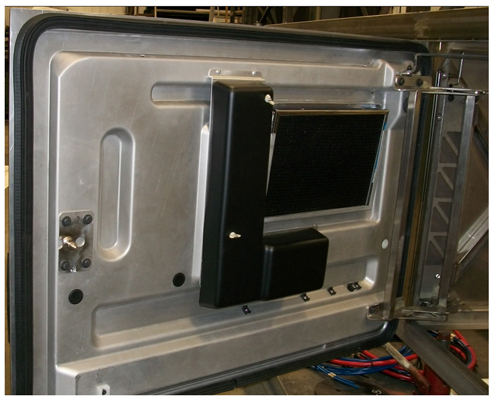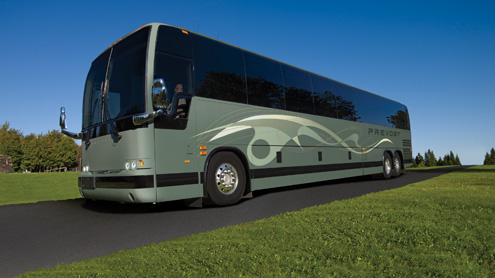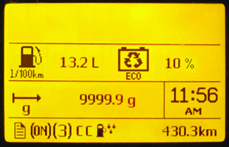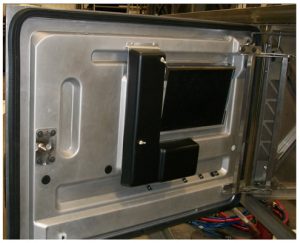
Prevost unveils intelligent energy management system
By David Hubbard

Power recovery through intelligent energy management is the focus of the new system Prevost calls PRIME. Unveiled during the UMA EXPO 2013 in Orlando, FL, the company says PRIME marks a milestone in the electrification of its coaches.
The system uses braking, deceleration and negative torque situations to create a low-power regenerative system. Using engine downtime to charge the batteries and compress air reduces fuel consumption. PRIME introduces new logic for controlling and energizing the alternators and air dryer when the engine is under minimal load. Prevost has also added a new equalizer to monitor the state of charge (SOC) of the batteries. The company says this intelligent management of energy maximizes battery life based on its inherent characteristics.
Prevost will offer PRIME as an option on the upcoming 2014 model H-Series and X-Series seated coaches and make it a standard feature on 2014 model H3-45 VIP and X3-45 VIP conversion coaches.
“We choose an easily obtainable AGM battery with a 800CCA, 100Ah specification with 190 minutes reserve capacity,” says Prevost Director of Marketing Michael Power. “We use AGM batteries that can take repetitive deep discharges and have proven to be very durable over 400 cycles. These batteries require no maintenance. They are sealed and spill-proof.”
He says AGM batteries are becoming more affordable and are readily available, and last up to four times longer than lead-acid batteries.

A coach without PRIME
Typically, the alternators constantly charge the batteries, which mean a constant parasitic load on the engine up to 14hp. Electrical loads on the coach are directly linked to the engine, as conventional lead-acid batteries need to be kept at optimal charge. An alternator has a mean efficiency around 65 percent affecting fuel consumption up to 2.4 liters per hour. A vehicle on the road usually uses its engine on compression mode between 10 and 30 percent of the time. These standard batteries generally cannot endure deep discharges.

A coach with PRIME
The PRIME system detects negative torque on the engine and triggers the alternators and the air dryer to charge the batteries and fill the air tanks to provide engine braking. The system monitors battery temperature to prevent overcharging and overheating and provides information to the driver on the battery state of charge (SOC).
Voltage display does not change and notes SOC in percentage. Based on the SOC, the software will determine if batteries need immediate charging or can wait until the next zero load on the engine to trigger a charge using free energy.
“This is a significant part of our continued effort to lower operating costs for our customers,” Power says. “With PRIME, improved fuel economy can be realized and good driving habits can even increase that cost savings.”
There is also a new feature in the cluster. With the engine running and the vehicle not moving, the percentage of trip made with regenerated electricity shows in the cluster. This value resets when the engine restarts. Prevost sees this as an incentive to the driver to adopt fuel-efficient driving habits.
The instantaneous fuel consumption bar graph displays when the vehicle is in movement.

Benefits of PRIME
Increased fuel economy — The amount of fuel savings depends on the duty cycle. According to Prevost, PRIME has an estimated fuel savings of 2 percent. Prevost validated the results in real driving conditions and with various duty cycles. Some test vehicles showed up to 5 percent fuel savings. The maximum fuel economy will come when the terrain of the road allows the batteries to charge only when the vehicle is in free wheel. Batteries charge with free energy without dedicating further fuel consumption.
Decreased lifecycle costs — While the price of absorbed glass mat (AGM) batteries is about twice that of conventional lead-acid batteries, their lifecycle is about four times longer than traditional batteries. The cost of replacing lead-acid batteries is often viewed as a hidden benefit of AGM batteries.
In AGM batteries the electrolyte is absorbed in a fiberglass mat separator. This sealed battery requires no maintenance during its lifetime. There is no danger of acid spilling and no need to add water.
New X3-45 Aluminum Baggage Bay Doors — New Prevost aluminum luggage bay doors on the X3-45, which Prevost has tested in a very tough winter environment over several years, are 38 percent or 265 lbs. lighter than the previous product. The reduced weight helps to reduce fuel consumption, especially for stop-and-go applications. The company says the high quality structure has a solid feel compared to welded tube structure along with an improved dent resistance — 2.6 mm aluminum thickness compared to 1.3 mm stainless.
The Class A finish lends a brighter luggage compartment compared to the dark grey of the previous doors. The redesigned door handle has the lock integrated into the plastic casing.
“These aluminum components reduce the vehicle’s weight,” Power says. “They are less expensive to replace, are easier to repair and improve overall fuel economy and lifecycle costs.”
The aluminum doors also feature a new innovative door seal — a one-piece with rounded corners and a multi-lip seal. This new water management redirects water away from the inside of the baggage bay, greatly improving water tightness. The seal installs easily without using glue. An added deflector means there is no direct access to the seal for water spraying from outside the coach. If water gets inside the door handle, it drains outside the coach.

Bitzer compressor — The 4-cylinder Bitzer air compressor replaces the Carrier 05G and mounts directly on the engine and is nearly 100 pounds lighter. The relative positions of each pulley do not vary and the belt span is shorter. This arrangement transmits vibration through the engine mounts instead of the structure. With more capacity at lower RPMs and engine idle speed, fuel economy improves two percent at 100km/hrs with less load on the engine — 4HP less at 100Km/h (60 miles per hour). BR
